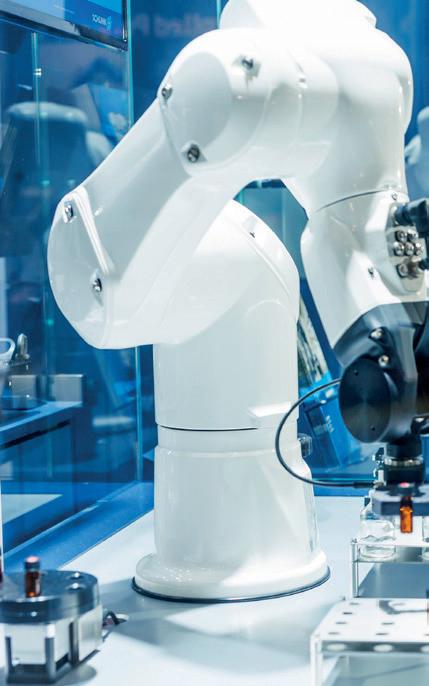
2 minute read
Making room for smaller devices: How the medical industry is benefitting from miniature motors

William Mason, managing director of motor and drive specialist maxon UK and Ireland, discusses how small motors are driving innovation across one of maxon’s fastest growing sectors: medical.


The trend for miniaturisation continues to be relevant as many industries are driven to reducing weights and footprints to save space and improve user experience. Modern surgical tools, for example, are being made smaller and lighter to improve precision while enhancing user comfort and safety.

Medical devices vary greatly in size and weight, from active implants, weighing between 20 and 50 grams, to larger, heavier surgical tools. Because of this, each device will have its own motor requirements. For example, active implants must withstand the high salt concentrations inside the human body. Meanwhile, surgical tools need motors with high-power densities and without gears, to limit vibration and noise.
Despite these differences, one thing remains the same: the need for small motors. In fact, it is now possible to manufacture motor controllers smaller than a postage stamp, adding extra control modules where necessary to enhance the capabilities and precision.
In something as small as an active implant, reducing weight seems obvious because the device is embedded somewhere in the body. But, for something bigger like a surgical drill, miniaturisation is just as important.

This was apparent when maxon supplied a configurable DCX direct drive to a Dublin-based hair replacement clinic who wanted to create a hair follicle extractor drill to replace its existing bulky and cumbersome device. Because hair replacement procedures can take between three and four hours, depending on how many hairs are grafted, a lightweight device was needed to reduce user fatigue and optimise precision. The resulting drill offered high power density and torque in a compact footprint, the nose measuring just 0.8 millimetres in width.
Small motors are also needed in myoelectrics, a technology that uses sensors to recognise and measure muscle contractions in prosthetic limbs. This was demonstrated when Massachusetts-based Myomo needed several small motors and controllers to manage multiple features simultaneously in the elbow, hand, and fingers of its motorised arm brace, the MyoPro 2+.
For someone who has lost the use of an arm from a stroke or traumatic brain injury, regaining as much function as possible is vital to improving their quality of life. If a brace is cumbersome to lift, the functions of the device will be limited and users may be at a higher risk of further injury, like repetitive strain on the shoulder or neck. This is why the
MyoPro 2+ had to be as lightweight as possible, allowing it to feel like a natural extension of the body, rather than a medical device.
To achieve this, the company used a miniature maxon DCX19 motor in the elbow joint, and a RE13 with an integrated planetary gearhead for the hand operations. Both motor ranges offer higher power density in smaller footprints, usually between 6–35 mm depending on the application. Multiple miniature motors are used for this brace in different areas, in an aim to improve its functionality, and to allow users to comfortably perform normal daily activities.
It’s safe to say that the need for smaller motors will increase substantially as companies across the medical industry continue to miniaturise their designs. With 60-years’ experience and global R+D capacity, maxon is well positioned to provide specialist, lightweight motors to be integrated into small devices.










